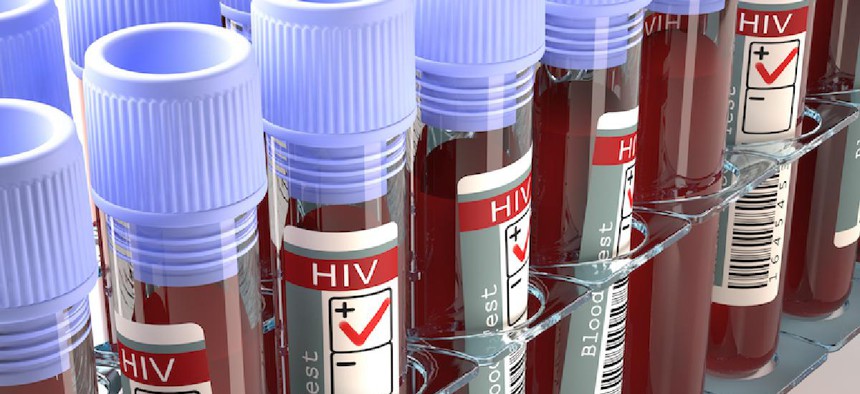Opinion
Let’s improve employment opportunities and end the AIDS epidemic

ktsdesign
It has been nearly 35 years since the first cases of AIDS were reported in the United States. Now more than ever before, we have the tools to combat HIV. We can increase viral suppression among those who are infected and reduce the rate of new infections – and look forward to a day when we can bring the AIDS epidemic to an end.
But we can’t achieve this goal unless we turn our attention to people in the communities that are most severely and disproportionately affected by HIV/AIDS. New HIV infections among young men of color who have sex with men (MSM) are increasing at an alarming rate. Health care providers, community-based organizations, public officials and citizens who care about public health must work together to develop effective solutions to combat this crisis. One such solution is improving employment opportunities – a key determinant of health and therefore a critical component of ending the AIDS epidemic.
Nationally, more new HIV infections occur among young black gay and bisexual men (ages 18-25) than any other group; young black men who have sex with men aretwice as likely to be infected with HIV than any other ethnic group. At this rate, the Center for Disease Control estimates that by 2044, 70 percent of 20-year-old gay black men could be HIV-positive. Latinos accounted for nearly 25 percent of new HIV infections in the U.S. from 2008-13, with a 16 percent increase among Latino MSM during the same time period.
As we celebrate Black History Month we must acknowledge that HIV is a dangerous health risk for many young men of color who have sex with men, and there is much work to be done to stem the tide of HIV in this community.
Social and economic factors, particularly employment, have major health consequences. Without a job and a livable income, access and attention to health care is severely limited. Gov. Andrew Cuomo’s Blueprint to End the AIDS Epidemic in New York State by 2020 singles out employment as a critical factor to maintaining health and provides extensive recommendations on how job creation can help minimize new HIV infections.
Workforce development programs can empower young people to take ownership of their health and the health of others. For example, training programs for jobs in health navigation and outreach, like Amida Care’s Workforce Initiative Network program, could prepare young MSM of color to reach out to their social networks and use their life experience to help those who are HIV-positive engage in treatment. The program also helps those who have not been tested and do not yet know their status to get tested for HIV, or those who may be at greater risk of becoming infected learn about prevention tools like pre-exposure prophylaxis.
Having this outreach come from people who understand the community they are serving creates a safe space in which young MSM of color can access treatment, preventive services and regular, high-quality health care. By fostering openness and encouraging dialogue around HIV prevention and treatment while creating living-wage jobs, these programs could have a tremendous effect on the health of young MSM of color and ultimately help to prevent new HIV infections.
We know that job stability facilitates long-term medical treatment, medication adherence, and viral suppression. Researchers have found that employed HIV-positive respondents had 27 percent higher odds of optimal adherence to anti-retroviral medication compared to those not employed. There is a strong correlation between employment and improved physical and mental health for people living with HIV, because they have more financial security and motivation to get and stay healthy.
At Amida Care, New York’s largest Medicaid special-needs health plan, addressing social determinants of health is one of our top priorities. We have found that providing holistic, accessible health care and services to our members encourages better health outcomes. With a diverse membership – 62 percent African-American and 34 percent Latino – over 90 percent of our members are receiving ongoing, sustained medical care, and we have achieved a viral suppression rate approaching 75 percent among our HIV-positive members. Successes like these save lives and produce much needed long-term health care savings. Several of Amida Care’s staff members are also enrolled in the health plan, helping us to better understand member needs while empowering these members with a meaningful career.
Programs that train young MSM of color for health care jobs can benefit the entire community and get us closer to ending the AIDS epidemic. Through public-private cooperation and investment in the future of our young people, an AIDS-free future can be within our reach.
Doug Wirth is the president and CEO of Amida Care, a not-for-profit health plan that specializes in providing comprehensive health coverage and coordinated care to New Yorkers with chronic conditions, including HIV and behavioral health disorders. Ritchie Torres is a New York City Council member representing the central Bronx and is also co-chairman of the Council’s Black, Latino and Asian Caucus.
NEXT STORY: Steven Banks' winning formula
